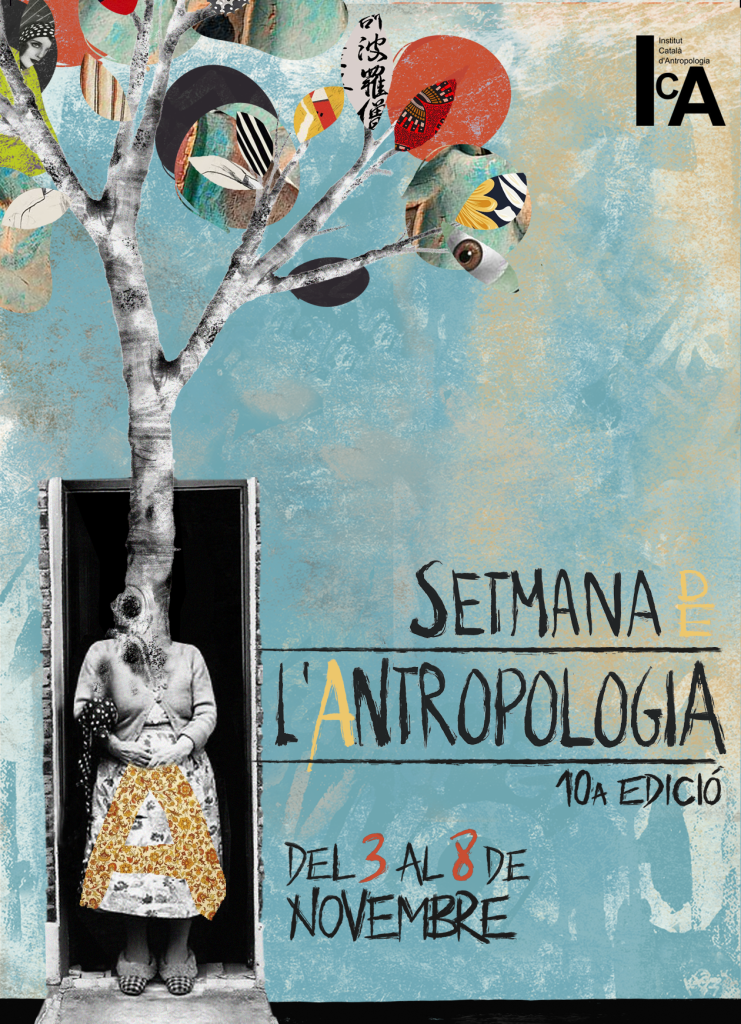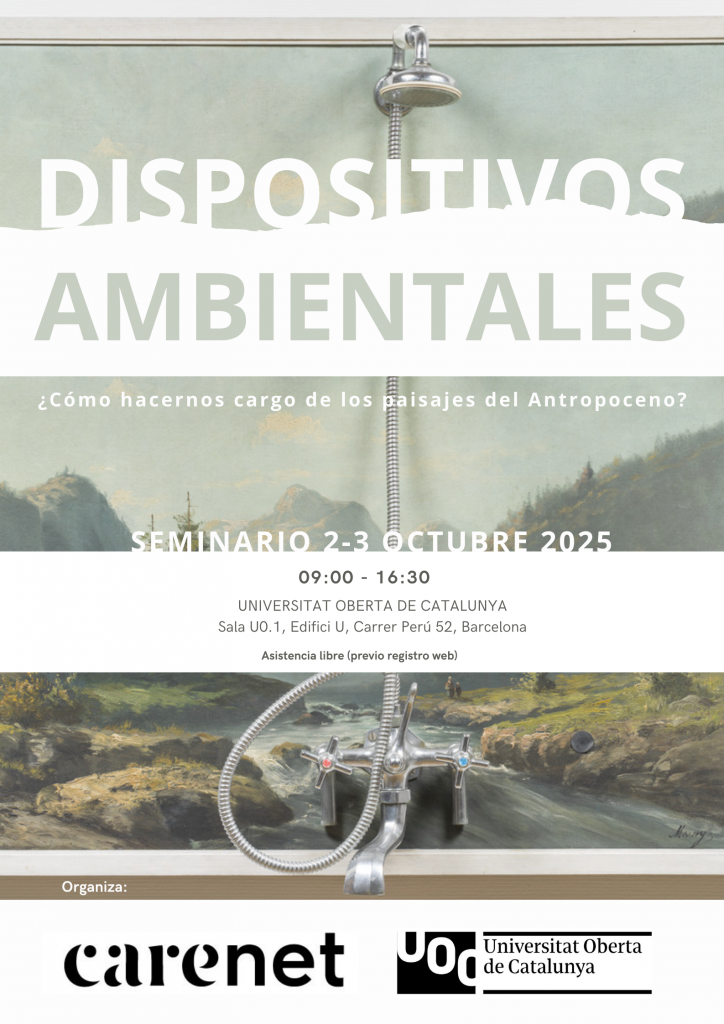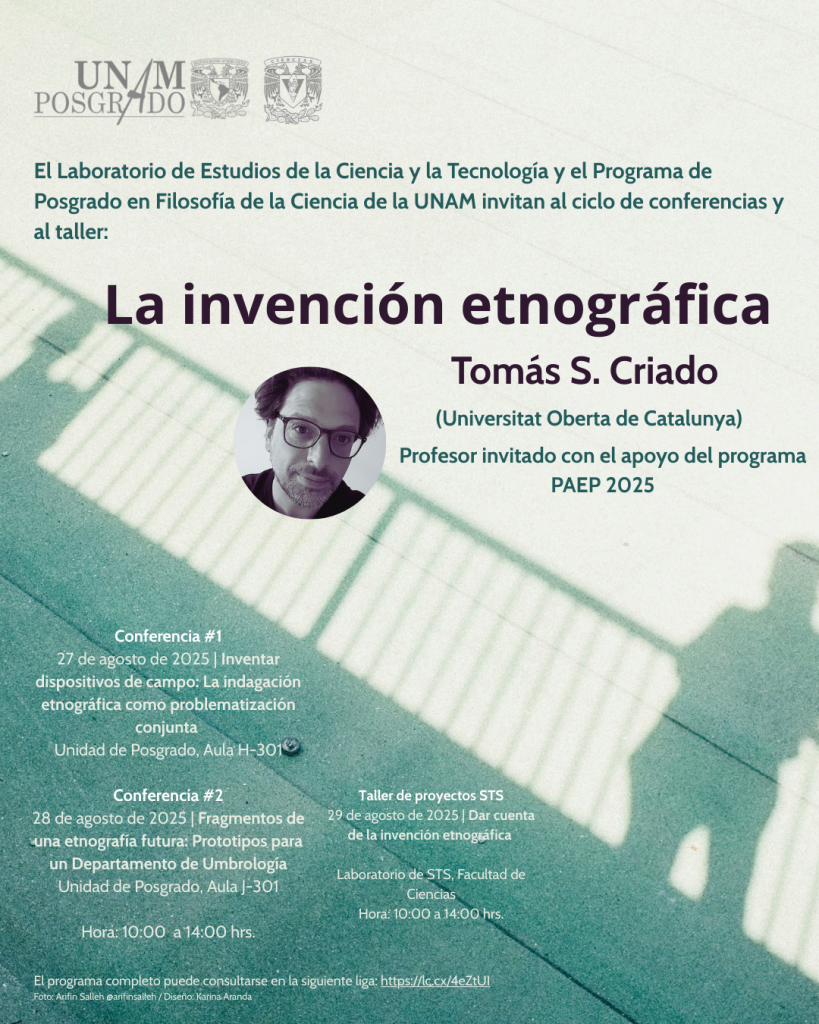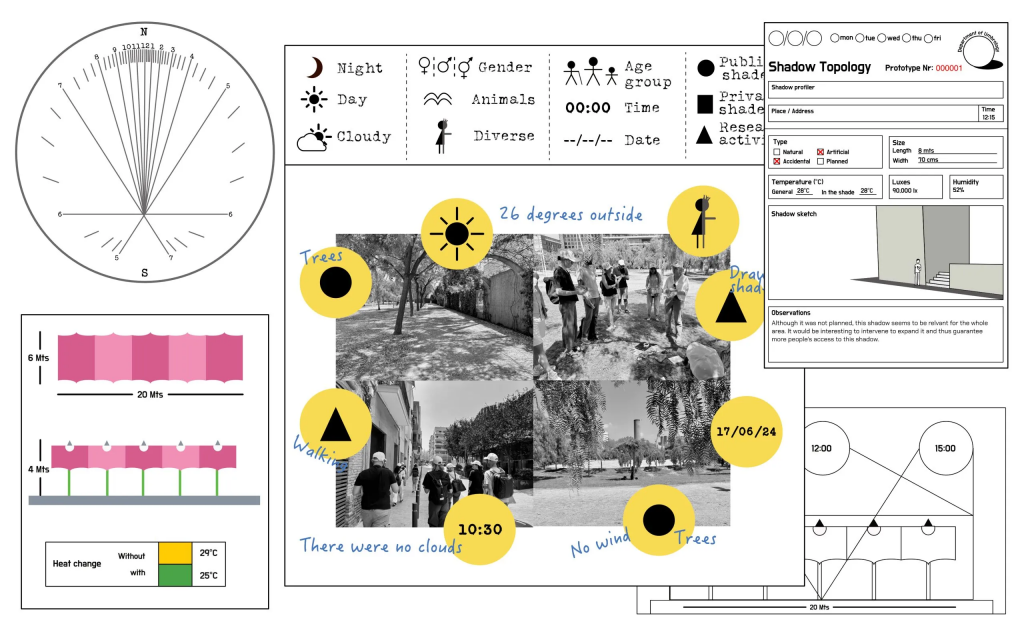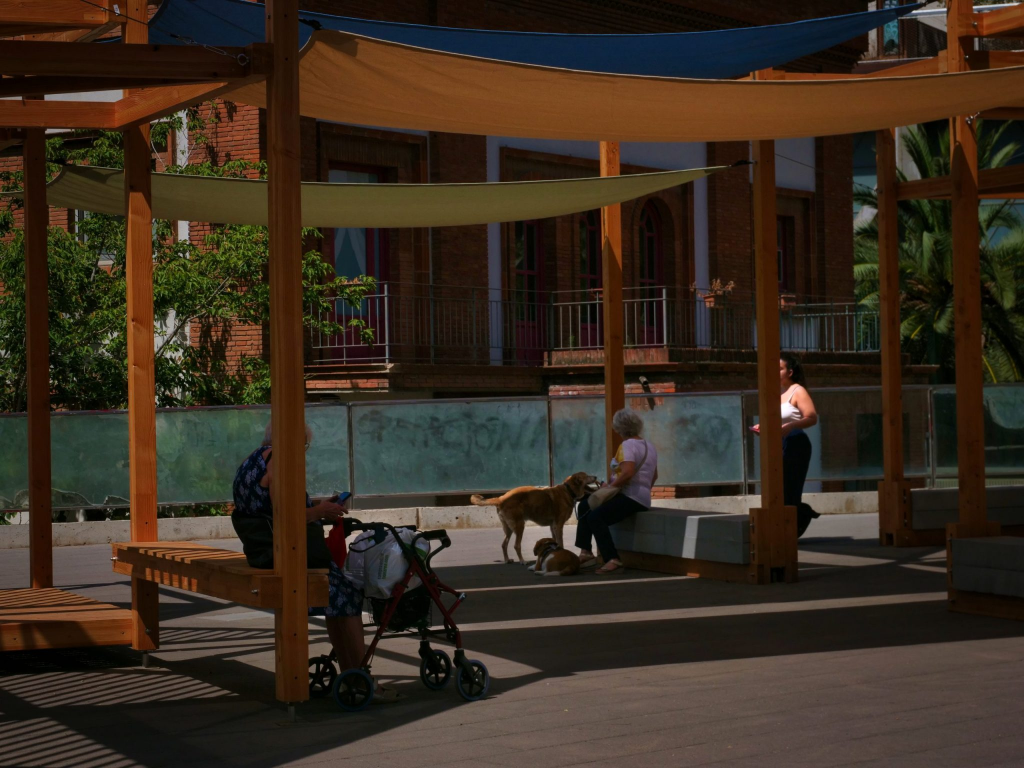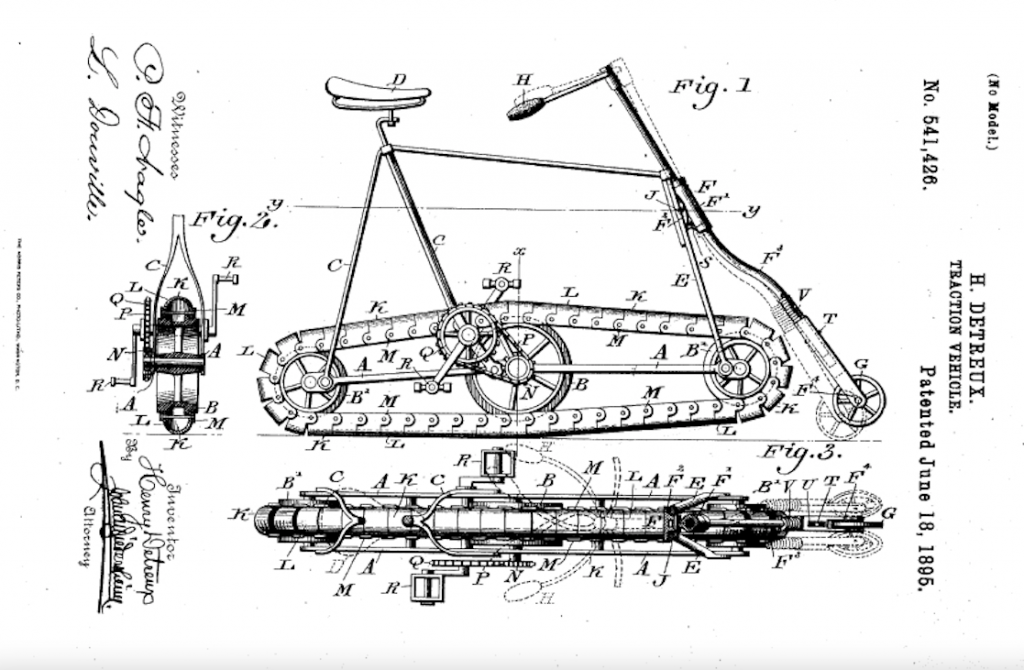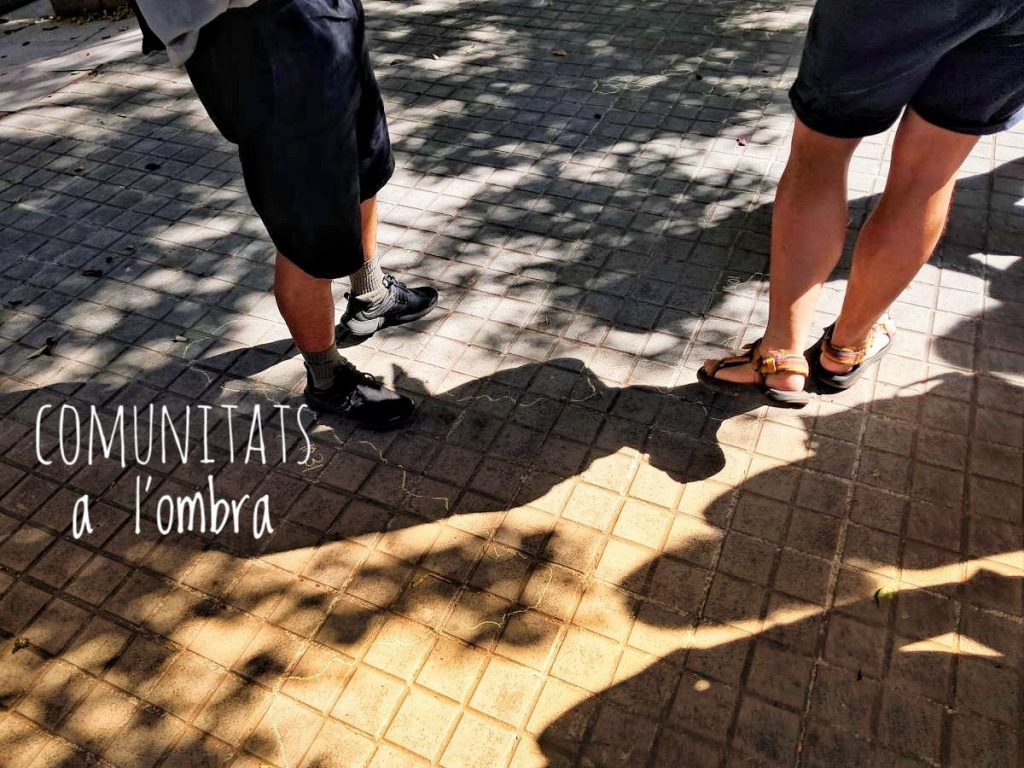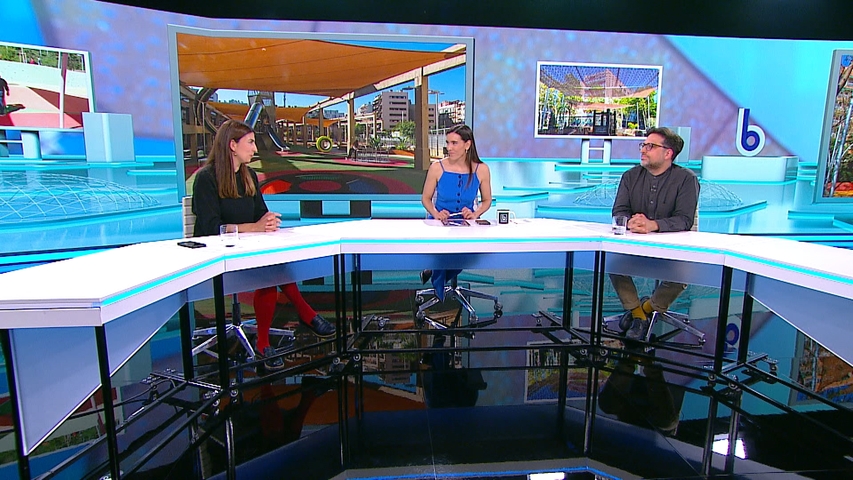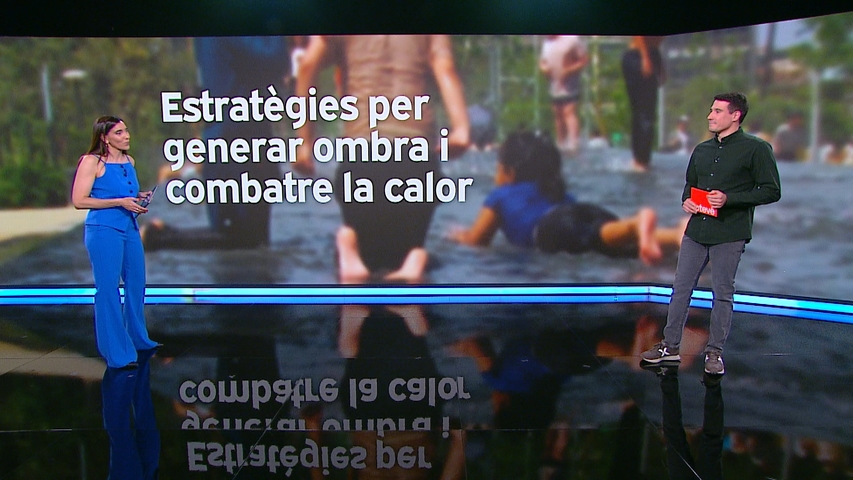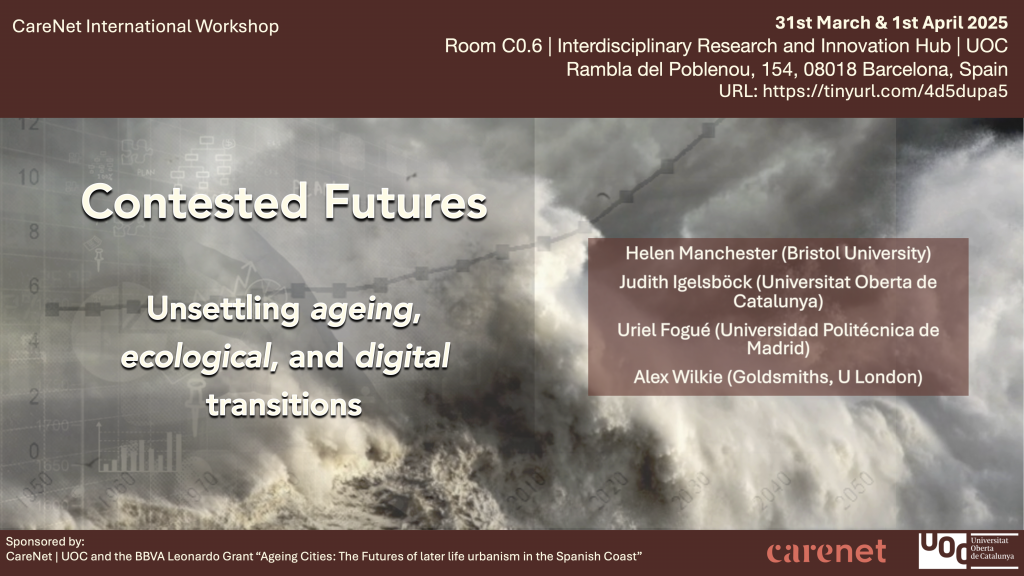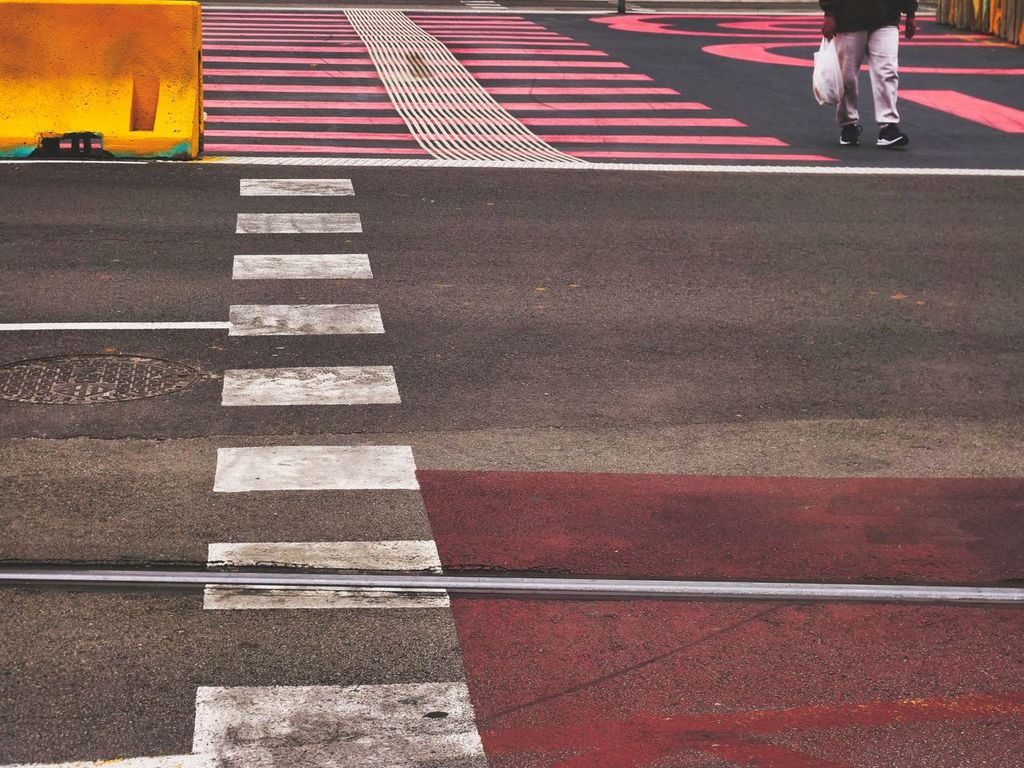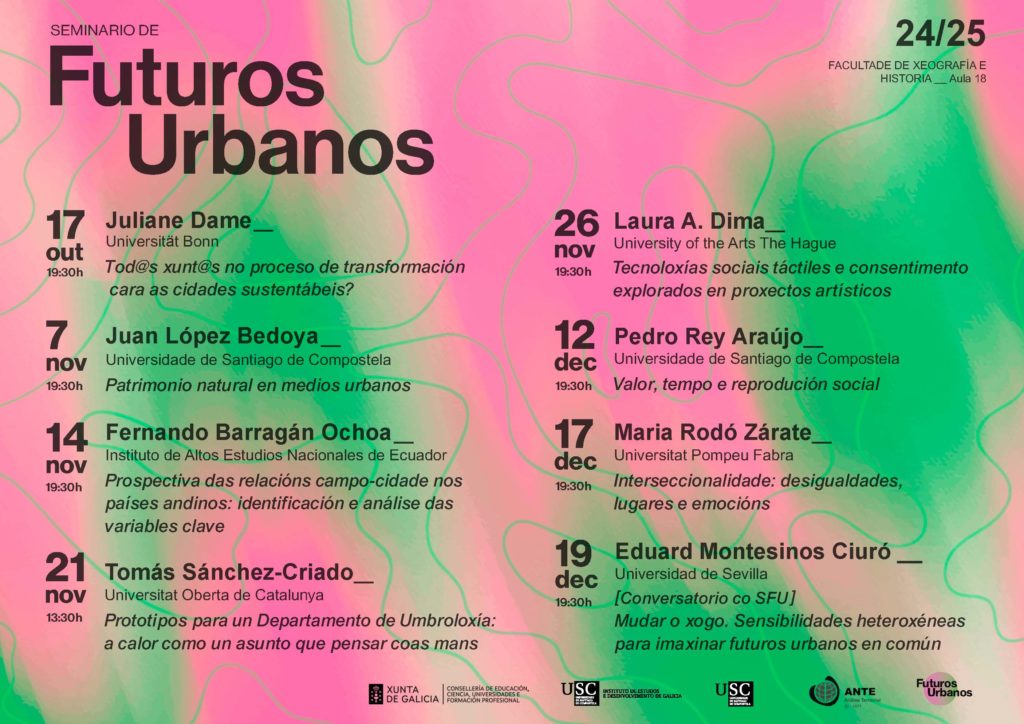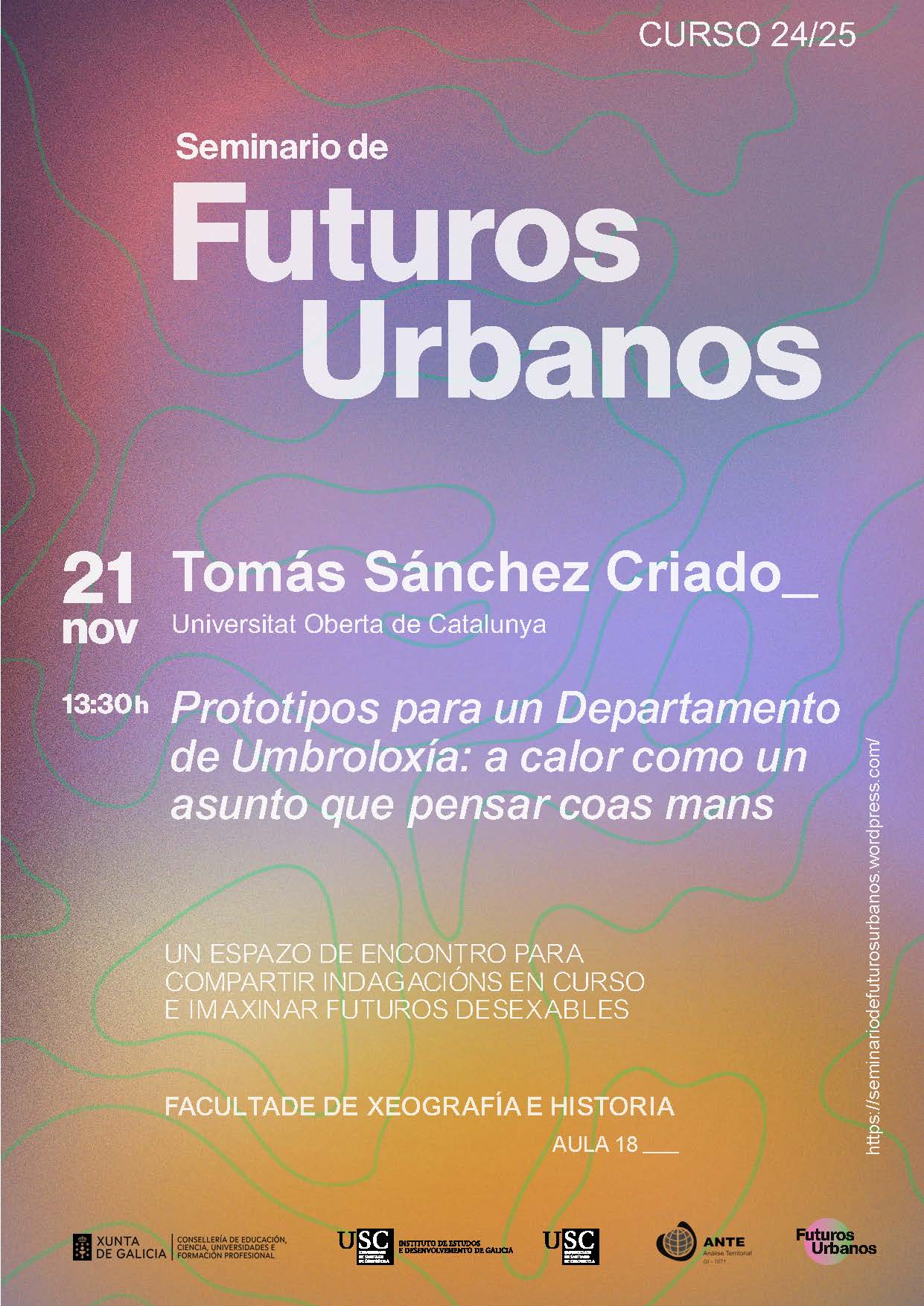Hoy tengo el gran honor de aparecer en la contra de El País.
Quisiera agradecer a Noelia Ramírez de El País por su buen hacer, el interés en el proyecto del Departamento de Umbrología y por una conversación muy agradable, en la que uno a veces echa a volar demasiado la imaginación
PD. Gracias también por eliminar en la versión online el lapsus sobre los pinos “ignífugos”, cuando son todo lo contrario: “combustibles” o “pirófilos” (en fin, el que tiene boca se equivoca).
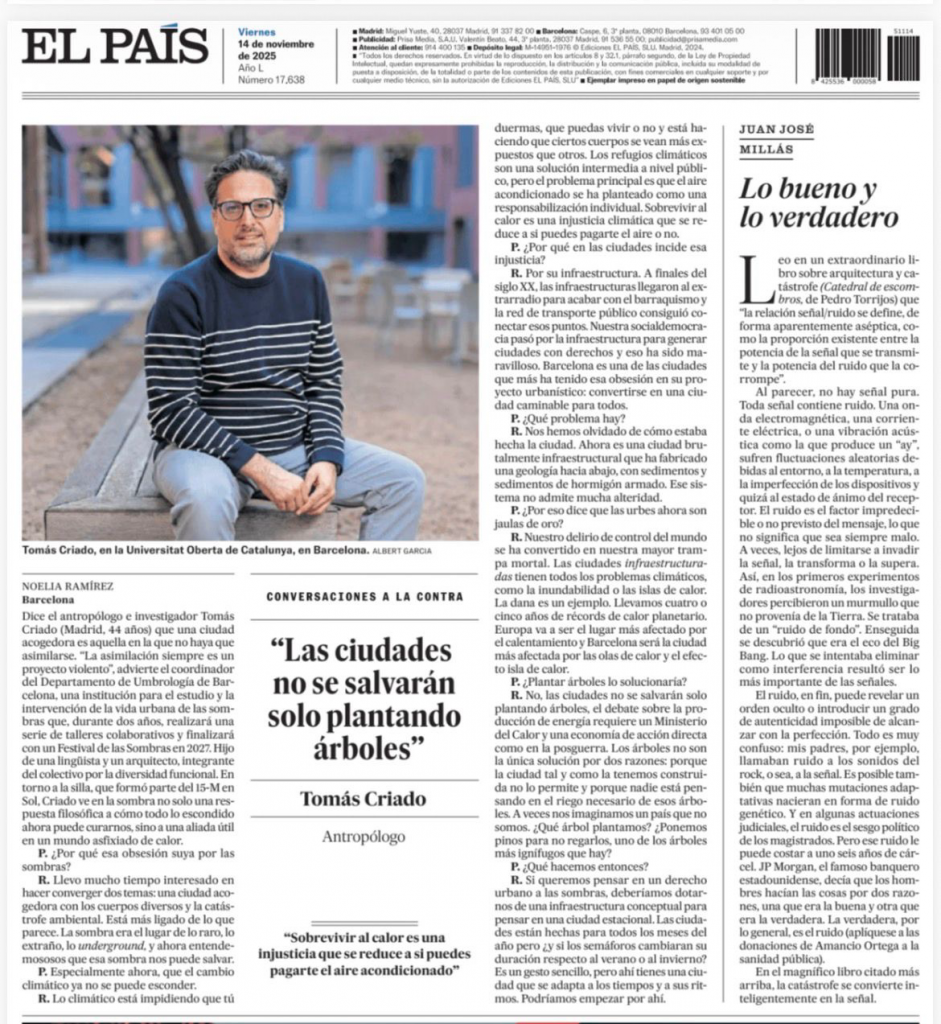
Dice el antropólogo e investigador Tomás Criado (Madrid, 44 años) que una ciudad acogedora es aquella en la que no haya que asimilarse. “La asimilación siempre es un proyecto violento”, advierte el coordinador del Departamento de Umbrología de Barcelona, una institución especulativa para el estudio y la intervención de la vida urbana de las sombras que, durante dos años, realizará una serie de talleres colaborativos y finalizará con un Festival de las Sombras en 2027.
Hijo de una lingüista y un arquitecto, integrante del colectivo por la diversidad funcional En torno a la silla que formó parte del 15M en Sol, Criado ve en la sombra no solo una respuesta filosófica a cómo todo lo escondido ahora puede curarnos, sino a una aliada útil en un mundo asfixiado de calor.
P. ¿Por qué esa obsesión suya por las sombras?
R. Llevo mucho tiempo interesado en hacer converger dos temas que me preocupan: una ciudad acogedora con los cuerpos diversos y la catástrofe ambiental. Está más ligado de lo que parece. La sombra era el lugar de lo raro, de lo extraño, de lo underground y ahora hemos entendido que esa sombra es la que nos puede salvar.
P. ¿Cómo?
R. De forma mundana y sencilla, lo más fácil es agarrar una superficie y crear una sombra. Eso ya alivia. Pero las sombras no solo nos llevan a hacernos cargo de nuestras oscuridades, de todo lo que la modernidad ha dejado en el rincón de no pensar y que ahora nos vuelve. También nos obliga a repensar una arquitectura que despreciamos. En un entorno mediterráneo con cambios estacionales quisimos copiar al norte de Europa cuando las arquitecturas de la sombra del Medio Oriente, donde el calor es persistente, nos ofrecen muchas más soluciones.
P. Especialmente ahora, que el cambio climático ya no se puede esconder.
R. Vivimos bajo un zumbido de calor constante. Lo climático está impidiendo que tú duermas, que puedas vivir o no y está haciendo que ciertos cuerpos se vean más expuestos que otros. Las viviendas, en las ciudades, no están preparadas para las noches de calor extremo porque no tienen buen aislamiento. Los refugios climáticos son solución intermedia a nivel público, pero el problema principal es que el aire acondicionado se ha planteado como una responsabilización individual. Sobrevivir al calor es una injusticia climática que se reduce a si puedes pagarte el aire o no.
P. ¿Por qué en las ciudades incide esa injusticia?
R. Por su infraestructuración. A finales de siglo XX, las infraestructuras llegaron al extrarradio para acabar con el barraquismo y la red de transporte público consiguió conectar esos puntos. Nuestra socialdemocracia pasó por la infraestructura para generar ciudades con derechos y eso ha sido maravilloso. Barcelona es una de las ciudades que más ha tenido esa obsesión en su proyecto urbanístico: convertirse en una ciudad caminable para todos.
P. ¿Qué problema hay?
R. Nos hemos olvidado de cómo estaba hecha la ciudad. Ahora es una ciudad brutalmente infraestructural que ha fabricado una geología hacia abajo, con sedimentos y sedimentos de hormigón armado. Ese sistema no admite mucha alteridad.
P. ¿En qué sentido?
R. Yo no estoy en contra del poder de los técnicos porque son necesarios, pero deberíamos abrir una conversación sincera para revisar cómo uno de los problemas del urbanismo es que todo está regulado y es muy difícil transformar el espacio. Ahora mismo, sin un permiso, tú no puedes plantar una sombrilla en la calle como la plantas en la playa.
P. ¿Por eso dice que las urbes ahora son jaulas de oro?
R. Nuestro delirio de control del mundo se ha convertido en nuestra mayor trampa mortal. Las ciudades infraestructuradas tienen todos los problemas climáticos, como la inundabilidad o las islas de calor. La dana es un ejemplo muy claro. Llevamos cuatro o cinco años de récords de calor planetario. Europa va a ser el lugar más afectado por el calentamiento y Barcelona será la ciudad más afectada por las olas de calor y el efecto isla de calor.
P. ¿Plantar árboles lo solucionaría?
R. No, las ciudades no se salvarán solo plantando árboles, el debate sobre la producción de energía requiere un Ministerio del Calor y una economía de acción directa como en la posguerra. Los árboles no son la única solución por dos razones: porque la ciudad tal y como la tenemos construida no lo permite y porque nadie está pensando en el riego necesario de esos árboles. A veces nos imaginamos un país que no somos. Todo el debate público está obsesionado con plantar árboles. Pero, ¿qué árbol plantamos? ¿Quién va a regar esos árboles?
P. ¿Qué hacemos entonces?
R. Si queremos pensar en un derecho urbano a las sombras, deberíamos dotarnos de una infraestructura conceptual para pensar en una ciudad estacional. Las ciudades están hechas para todos los meses del año pero, ¿y si pensamos que los semáforos cambiaran su duración respecto al verano o al invierno? Es un gesto sencillo, pero ahí tienes una ciudad que se adapta a los tiempos y a sus ritmos. Podríamos empezar por ahí.
